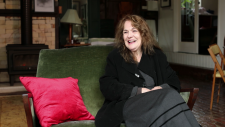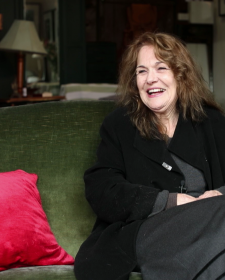- About us
- Support the Gallery
- Venue hire
- Publications
- Research library
- Organisation chart
- Employment
- Contact us
- Make a booking
- Onsite programs
- Online programs
- School visit information
- Learning resources
- Little Darlings
- Professional learning
Xavier Herbert (1901 –1984), author, was born Alfred Jackson to a single mother in Geraldton, WA. Leaving school early, he worked in miscellaneous jobs in WA and Victoria before moving to Sydney in 1926. There he published his first stories under the name of Herbert Astor. From 1927 to 1930 he lived in Darwin. He drew on his experiences there while writing his first book, Capricornia, in London in 1930-1932. Herbert stated that the working title of the novel, which at first, dealt mainly with inter-racial sexual relations, was Black Velvet. Broadened in scope, retitled Capricornia, it characterised Australia as a place ‘Despoiled by White Bullies, Thieves, and Hypocrites’; it won the Commonwealth Prize for the best Australian novel published or accepted for publication in the year 1937. Herbert settled in Cairns in 1946. Having written little in the 1940s and 1950s, the largely-overlooked Soldiers’ Women in 1961 and his autobiography Disturbing Element in 1963, he made his name with Poor Fellow My Country (1975), which won the Miles Franklin Award and still holds the record for the longest Australian novel. He gained two honorary D. Litts in 1976. Described by Russell McDougall in the Australian Dictionary of Biography as ‘outrageously pugnacious, deeply fascinated by his own masculinity, obsessed by his own sexuality . . . passionate in his devotion to Australia and fiercely republican’, Herbert moved to the Northern Territory shortly before he died. Patrick Dodson officiated at his funeral alongside local elders.
Jacqueline Mitelman flew to Cairns to photograph Xavier Herbert. She writes ‘At that time – in the early eighties – Herbert was an intense, energetic, and still feisty, 82-year old. He offered opinions on everything, and made me lunch – steak and potatoes. I liked him immensely. His long-time partner and muse had recently died, and he confessed that he couldn't imagine living without a muse, the love of a woman. In the ignorance of my then youth, I couldn't imagine this desire would ever be fulfilled. About a year after I had taken his photograph, I was proved wrong. I read in an interview that he’d found a new devoted partner. The photographs were taken in and around his tropical home, all using available light and Tri-X film. ’
Collection: National Portrait Gallery
Purchased 2018



On one level The Companion talks about the most famous and frontline Australians, but on another it tells us about ourselves.



Australian photographer, Jacqueline Mitelman, discusses her process for creating portraiture.



Visit us, learn with us, support us or work with us! Here’s a range of information about planning your visit, our history and more!